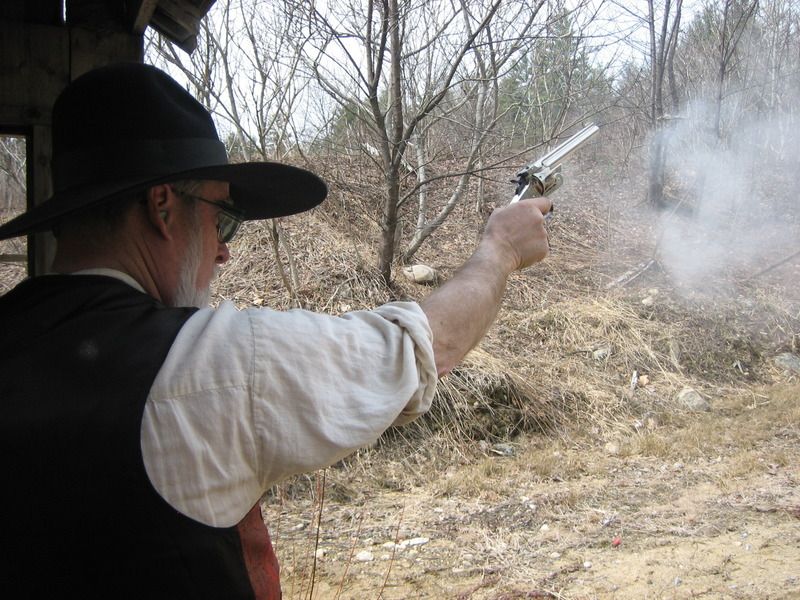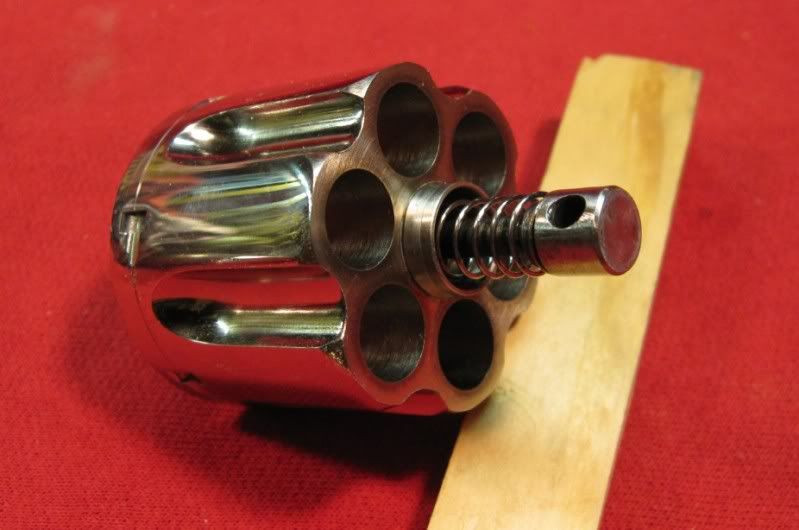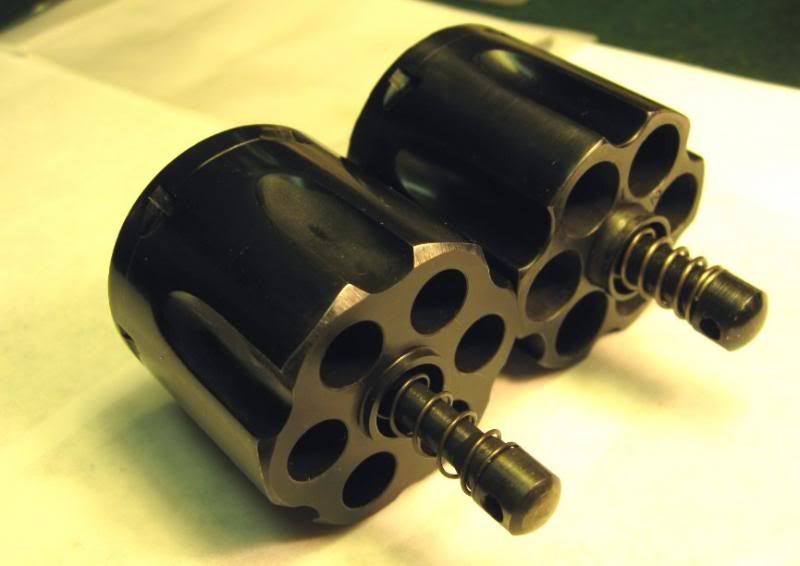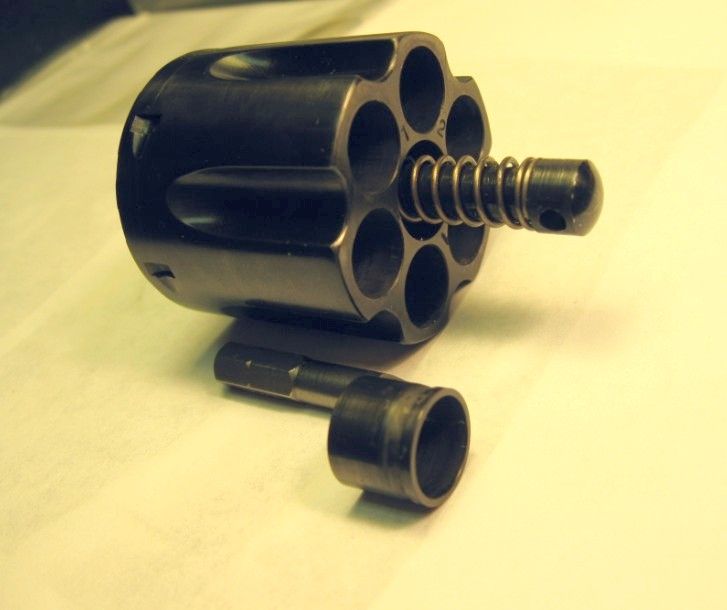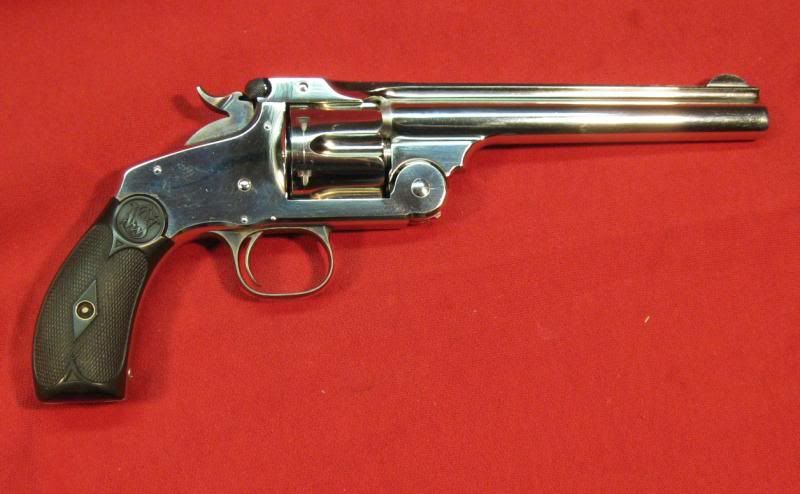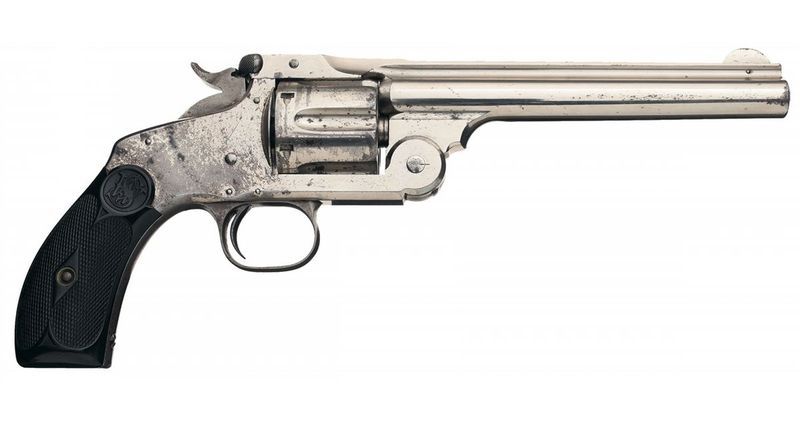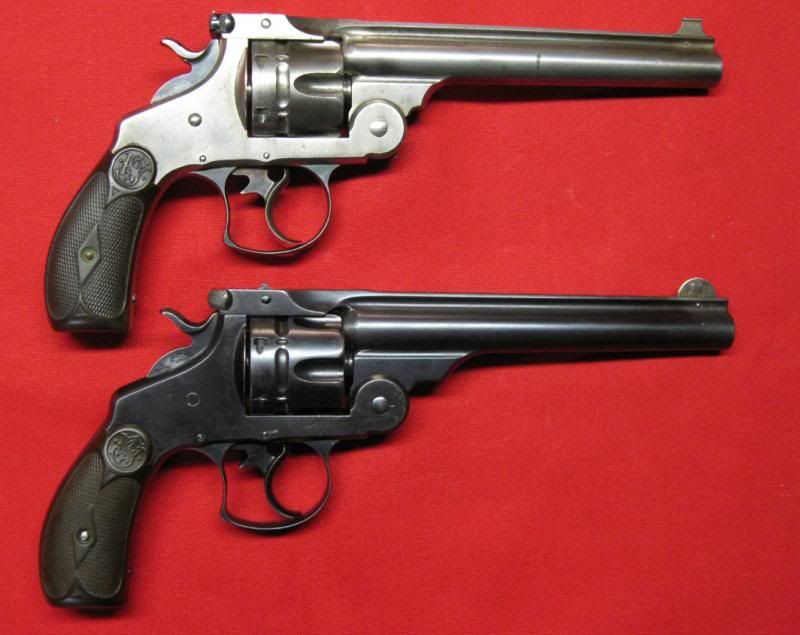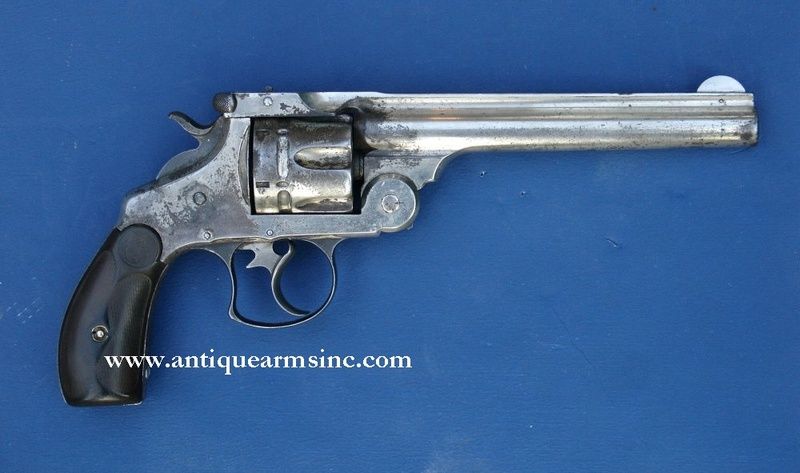The Russian models are Smith & Wesson Model 3's that Schofield copied and modified.
????
Schofield worked out his modification to the latch on the American model, not the Russian model.
The first model Russian looked exactly like the American Model except it was chambered for the then new 44 Russian cartridge. The 2nd Model Russian looked exactly like mine, which I posted earlier. The 3rd Model Russian looked similar except it had a knurled screw on the top strap to make removing the cylinder easier.
****************************
Regarding making the replicas shoot Black Powder better: The problem is when the replicas were designed, they were designed for a longer cartridge than the originals. The originals had cylinders about 1 7/16" long, which was plenty long enough for the 44 Russian and 45 Schofield cartridges. But the replica makers wanted to chamber them for more easily available, and longer cartridges such as 45 Colt.
So the cylinders were 'stretched' to accommodate the longer cartridges. But the frames were not stretched a similar amount. So something had to give. The answer was the gas collar or gas ring at the front of the cylinder was made shorter, to fit into the 'non-stretched' frame.
The gas collar is what shielded the cylinder arbor from hot fouling blasted out of the barrel/cylinder gap. When it was shortened, the collar could no longer do its job effectively, and BP fouling tended to build up quickly on the cylinder arbor, causing the cylinder to bind after not very many shots.
Here is a photo of the cylinder of my New Model Number Three. The part protruding out the front is the gas collar. The collar is a separate piece, press fit into the cylinder.
I have aligned the parts in this photo to show how they related to each other. The spring loaded extractor rod will slip inside the cylinder arbor, while the gas collar will slide over the arbor.

Here is a close up of the barrel/cylinder gap area of the gun. You can see the barrel extends back and ends close to the front of the cylinder. The gas collar is directly below, extending forward and rubbing against the frame. The gas collar is about .165 proud of the cylinder. The .165 of horizontal separation is what makes the difference. When the gun fires the fouling blasted out of the barrel/cylinder gap hits the gas collar, which shields the arbor. So almost no fouling reaches the cylinder arbor below. It is Black Powder fouling blasted directly onto the cylinder arbor or cylinder pin that causes revolvers to bind up when fired with Black Powder. It is not the width of the barrel/cylinder gap, which some think is the culprit. All the old S&W Top Breaks had an arrangement like this. I can shoot my NM#3 all day long with Black Powder loads and it never binds up. That's the way it was designed.
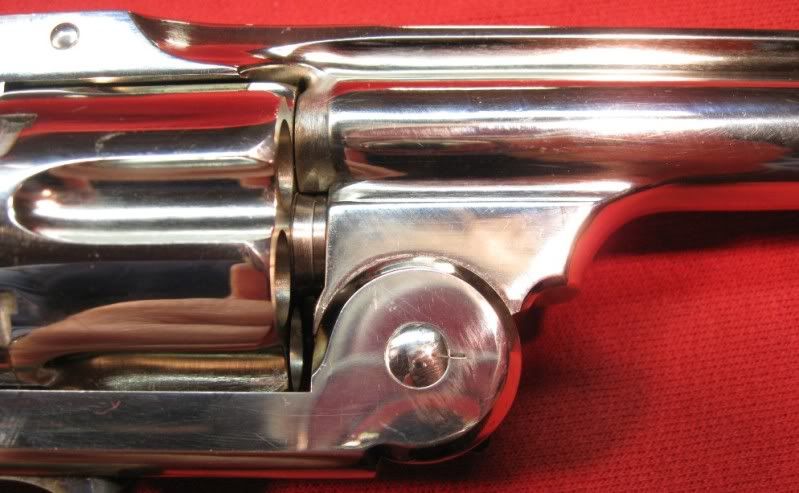
This photo shows two cylinders made by one of the Italian replica makers. The cylinder at the front is from a Navy Arms Schofield. Notice how short the gas collar is. It does not provide enough horizontal separation from the barrel/cylinder gap to protect the cylinder arbor from fouling blasted out of the gap. The revolver will bind up after not many shots fired with Black Powder ammunition. Notice the cylinder in the background. It has had a new, longer collar fabricated and pressed into place.
Here is a photo of the same cylinder before it had its collar pressed in place. This is the only way to reliably make a modern replica Top Break shoot well with Black Powder. The old relationship of the barrell/cylinder gap and collar has to be reestablished. Of course, to make this work, clearance has to be cut into the frame for the new collar. I only knew one gunsmith who was doing this work and he is retired now.

